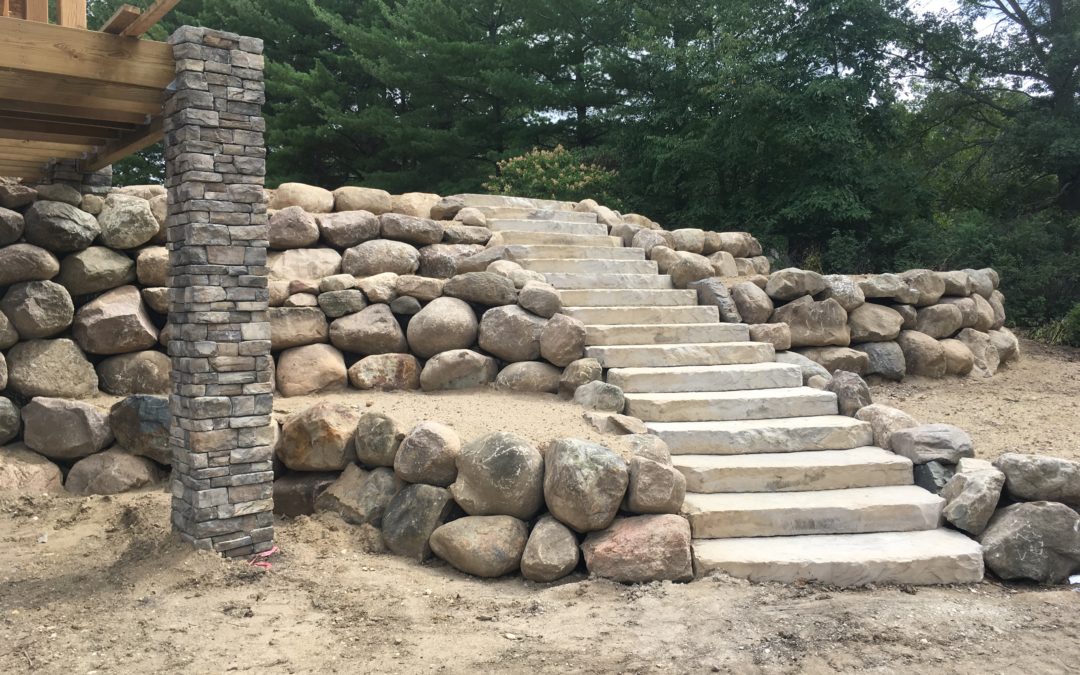Retaining walls serve a crucial role in landscaping by providing structural support to hold back soil and create usable outdoor spaces on sloped terrain. These versatile structures come in a variety of materials and designs, each offering unique features, benefits, and aesthetic appeal. Understanding the different types of retaining walls is essential for homeowners and landscapers seeking to enhance the functionality and beauty of their outdoor spaces. Let’s explore some of the most common types of retaining walls:
1. Gravity Retaining Walls: Gravity retaining walls rely on their weight and mass to resist the pressure of soil behind them. These walls are typically made from heavy materials such as stone, concrete blocks, or precast concrete panels. Gravity walls are suitable for low to medium heights and offer excellent stability and durability. They are relatively simple to construct and require minimal maintenance. However, gravity walls may not be suitable for tall or heavily loaded retaining wall applications.
2. Cantilever Retaining Walls: Cantilever retaining walls are designed with a reinforced concrete slab or beam extending back into the soil behind the wall, providing additional stability and support. These walls are ideal for medium to high retaining wall heights and offer superior strength and load-bearing capacity. Cantilever walls require careful engineering and construction to ensure proper balance and stability. They are commonly used in commercial and industrial applications but can also be suitable for residential landscapes.
3. Sheet Pile Retaining Walls: Sheet pile retaining walls are constructed from interlocking steel, vinyl, or concrete panels driven vertically into the ground to create a continuous barrier. These walls are often used in waterfront or marine environments to prevent erosion and provide shoreline stabilization. Sheet pile walls are highly effective in retaining soil and resisting lateral forces but may require specialized equipment for installation.
4. Gabion Retaining Walls: Gabion retaining walls are constructed from wire mesh baskets filled with rocks or gravel. These walls offer a natural and rustic aesthetic while providing excellent drainage and erosion control. Gabion walls are flexible and can adapt to changes in terrain and ground movement. They are suitable for both residential and commercial landscapes and can be easily installed with minimal site preparation. Gabion walls are environmentally friendly and allow for vegetation to grow through the mesh, further enhancing their visual appeal.
5. Anchored Retaining Walls: Anchored retaining walls are reinforced with cables or rods anchored into the soil behind the wall to provide additional stability and support. These walls are commonly used in situations where high loads or limited space require additional reinforcement. Anchored walls can be constructed using various materials, including concrete, steel, or timber. They are suitable for both temporary and permanent retaining wall applications and offer excellent resistance to soil movement and erosion.
6. Modular Block Retaining Walls: Modular block retaining walls are constructed from interlocking concrete blocks or segmental retaining wall units. These walls offer versatility, ease of installation, and a wide range of design options. Modular block walls can be customized to fit the contours of the landscape and accommodate curves, corners, and terraces. They provide excellent strength and durability and are suitable for a variety of residential and commercial landscaping projects.
In conclusion, the different types of retaining walls offer a range of options for homeowners and landscapers seeking to enhance the functionality, stability, and aesthetic appeal of their outdoor spaces. Whether you prefer the natural beauty of gabion walls, the strength and durability of concrete gravity walls, or the versatility of modular block walls, there’s a perfect retaining wall option to suit your needs and complement your landscape design. By carefully considering factors such as site conditions, soil type, budget, and aesthetic preferences, you can select the right type of retaining wall to create a beautiful and functional outdoor environment that stands the test of time.


Recent Comments